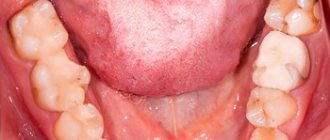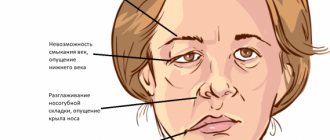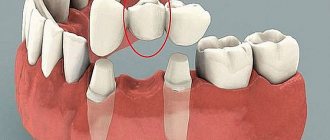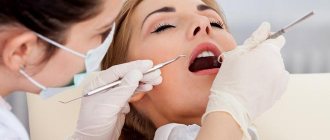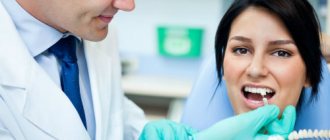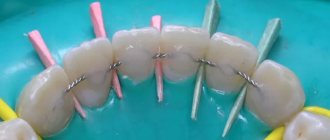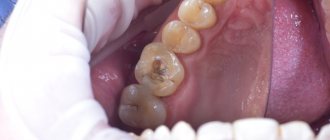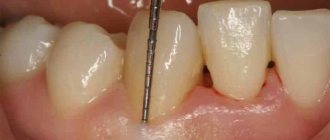Diode laser
Modern technologies are increasingly used in medicine. Today, laser treatment of periodontitis is commonplace. The healing properties of a narrowly targeted flow of energy are manifested in dentistry, creating the possibility of quick and painless dental treatment. The wide range of services provided with its help, coupled with relative affordability, contributes to the growing popularity of this method.
Areas of application of dental laser
The laser beam produces the following beneficial effects:
- anti-inflammatory;
- sterilizing;
- biostimulating;
- anesthetic.
Once on the surface of the tissue, the beam instantly turns the liquid into vapor, which, like a microscopic explosion, deliberately breaks intermolecular bonds layer by layer. At the same time, all microorganisms in the affected area die. To ensure that healthy cells do not suffer, jet air and water cooling is used, which also serves to wash out (blow out) the removed fragments.
A special type of laser equipment is used to treat each type of disease. Examples:
- Erbium and diode units are used against caries and for treating hard tooth tissues.
- Gas semiconductor devices have proven themselves to be excellent in physiotherapeutic and reflexology procedures.
- Diode lasers are characterized by a good hemostatic effect and have found their use in surgery.
The purpose of each device is determined by the wavelength of the radiation and its intensity. For example, biostimulation requires the release of energy from 10 - 100 mW/cm?, and the anti-inflammatory effect will provide a power of 100 - 200 mW per square centimeter.
Different stages of periodontitis
Laser treatment of caries at A-Medic clinics
The use of lasers in dentistry is quite widespread. It is used not only to remove caries, but even for operations.
Compared to other techniques, laser therapy has many advantages:
- no need to use anesthesia (except in individual cases);
- antiseptic effect of laser waves;
- non-contact action, which prevents the risk of injury and infection of tissues;
- eliminating the possibility of bleeding (the laser seals the vessels in a split second);
- fast recovery.
The disadvantage of this treatment of caries with a laser is that it is more expensive than the cost of classical methods. However, the high price is explained by the advantages of the modern method of therapy, which also includes the possibility of conducting treatment without the use of a drill, which is the main reason for the fear of the dentist.
The A-Medic Clinic provides services for effective laser treatment of caries with a guarantee of the quality of work performed by highly qualified specialists. You can get additional information, find out the cost of services or make an appointment at any time on the dentist’s website, or by contacting the center’s consultants by phone.
Laser benefits
Due to its gentle impact, laser equipment is effective in solving almost all dental problems. It does not always replace a drill, but it successfully complements its work, since it can independently determine the affected areas, including those that are difficult to identify with the naked eye. The fact is that healthy tooth tissue does not contain moisture, and therefore boiling cannot occur in it. Many dental problems are resolved in just a few minutes and do not require a second visit to the doctor.
The beam is very thin and is able to penetrate microcavities that would otherwise require drilling with a bur. The radiation is directed to the desired location through a flexible and very thin quartz-polymer waveguide. The device itself is equipped with a compact, ergonomic head that can be easily operated by a trained physician.
Another advantage of the laser is that the surface processed by it acquires a slight roughness, which greatly improves the adhesion of the filling material. Reliable fixation reduces the likelihood of relapse to almost zero.
Treatment of wedge-shaped defect and treatment of cervical caries with ceramic inlays.
This technique is a premium one. Its distinctive feature is that the cavity in the tooth is closed not with a light-colored restoration material, but with a ceramic inlay. The service life of this ceramic inlay is about 25 years. In terms of aesthetic parameters, it is completely indistinguishable from natural tooth tissue.
Restoring a wedge-shaped defect or cervical caries with a ceramic inlay has several advantages:
- biocompatibility of the material from which the inlay is made. Lithium disilicate, the restoration material in this case, is called synthetic enamel in Germany.
- high aesthetics: the inlay is not noticeable on the tooth due to the chameleon effect that is inherent in lithium disilicate.
- long-lasting shine and no need for periodic polishing.
- Super smooth surface prevents the accumulation of plaque and tartar.
- service life up to 25 years due to the special strength of lithium disilicate.
IN THE PHOTO: AN EXAMPLE OF TREATMENT OF A WEDGE-shaped TOOTH DEFECT AT THE BIONIC DENTIS DENTAL CLINIC. BEFORE AND AFTER TREATMENT.
The process of treating a wedge-shaped defect or cervical caries using a ceramic inlay consists of the following steps:
First visit to the clinic:
- A topical anesthetic gel is applied to the patient’s gums to reduce the sensitivity of the mucous membrane.
- the treatment area is anesthetized by injection of Ultracaine, which makes all manipulations 100% painless.
- Using a turbine and a dental diamond bur, softened, pigmented and infected tooth tissues are cleaned and a place is formed for the placement of the inlay.
- the bottom and walls of the cavity are processed using a dental laser for sterilization.
- The tooth surface of the tooth is treated with a 7th generation adhesive system.
- Impressions are taken from the dentition using silicone impression material or a 3D scanner for transfer to the laboratory.
- a tooth enamel defect in the cervical area is restored with a temporary filling.
IN THE PHOTO: AN EXAMPLE OF TREATMENT OF CERVICAL TOOTH CARIES AT THE BIONIC DENTIS DENTAL CLINIC. BEFORE AND AFTER TREATMENT.
Second visit to the clinic:
- A topical anesthetic gel is applied to the patient’s gums to reduce the sensitivity of the mucous membrane.
- the treatment area is anesthetized by injection of Ultracaine, which makes all manipulations 100% painless.
- Using a turbine and a dental diamond bur, the temporary filling is removed.
- An inlay made in a dental laboratory is glued into the cavity in the cervical area of the tooth.
- The glue is polymerized using a dental lamp.
- The restoration is polished.
Thus, to make a ceramic inlay for the treatment of a wedge-shaped defect or cervical caries, two visits to the clinic are required. However, the long service life of such a design (several times longer than the service life of the filling) compensates for such a long process.
Each visit takes approximately 40 minutes.
The time between visits is on average 10 days.
The cost of restoration of a wedge-shaped defect or cervical caries of a ceramic inlay made of lithium disilicate is 55,000 rubles.
IN THE PHOTO: AN EXAMPLE OF TREATMENT OF CERVICAL TOOTH CARIES AT THE BIONIC DENTIS DENTAL CLINIC. BEFORE AND AFTER TREATMENT.
These methods for treating wedge-shaped defects and cervical caries within the walls of our clinic will allow you to forget about this problem for many years.
Ozerov Petr Vladimirovich
Chief physician. Dentist, implantologist, orthopedist, surgeon. Laser dentistry specialist
More details
Werner Elena Vladimirovna
Dentist periodontist
More details
Eremina Anna Arturovna
Dentist therapist
More details
Problems eliminated by laser beam
These properties allow the laser to be used to take the following therapeutic measures:
- removal of dental stones;
- treatment for periodontal diseases (gingivitis and periodontitis);
- getting rid of the consequences of caries and granuloma.
The disinfecting and biostimulating effect of using laser dental equipment makes it possible to fight the following infectious diseases:
- herpes rashes on the lips;
- aphthous stomatitis;
- ulcers;
- painful cracking in the corners of the mouth.
Practice has confirmed the high efficiency of laser equipment when performing the following therapeutic procedures:
- decreased sensitivity of enamel and its whitening;
- sealing fissures in children's teeth and correcting wedge-shaped defects;
- installation of implants;
- correction of various defects of the oral cavity.
It should be noted that getting rid of such a dangerous disease as granuloma using a laser beam is not accompanied by tooth extraction, but can be done conservatively, using transcanal dialysis:
- after analyzing the x-ray and external examination, a diagnosis is made;
- the canal (or filling, if it was previously installed) is opened, expanded and processed with aseptic material;
- a waveguide connected to the laser emitter is inserted into the prepared channel;
- the granuloma is exposed to the targeted beam for the required time;
- the liquid inside the granuloma evaporates, the capsule narrows, the tooth root is sterilized;
- the channels are disinfected and sealed;
- adhesive and filling material is applied.
Further, if there is a need for this, work is done to model the crown and install it.
The use of anesthetics and antibiotics is kept to a minimum, which is very important when treating children and adults prone to allergic reactions.
Laser treatment of patients is possible at the initial stage of periodontitis and is carried out in the following sequence:
- After diagnosis, the doctor removes plaque and hard deposits, including under the gum;
- Photoditazine is applied to the treated areas, which is washed off after 10 minutes;
- The laser emitter is directed to the subgingival area.
The treatment course involves two sessions with a six-month break.
How is the treatment carried out?
If a person is concerned about the signs of caries, the first thing to do is make an appointment with a dentist. At the initial appointment, the doctor performs an examination and makes recommendations. If the patient decides to undergo therapy, then a caries treatment regimen is determined.
Laser therapy has contraindications, so the dentist must make sure that the patient does not have them during the interview. Additional diagnostics are prescribed at the discretion of the doctor. If limitations to the use of the laser are identified, the dentist selects alternative methods.
At the A-Medic clinic, dental caries treatment is carried out according to the following scheme:
- use of local anesthetic (for hypersensitivity or deep carious lesions);
- cleaning the enamel from plaque and removing softened crown tissues (using sandblasting or ultrasound);
- Preparation of the laser installation (adjusting the power of laser beams, selecting attachments).
The laser beam acts in a directional manner, so it does not affect healthy tissue. After the area affected by caries has been treated, the crown is treated with a special compound. The procedure is completed by installing a filling and giving the tooth an aesthetic appearance by grinding.
Advantages of laser dentistry
One of the most important advantages of dental laser equipment is the absence of mechanical impact. Unpleasant sensations typical for treatment with a drill are eliminated, as is the occurrence of microdamages associated with vibration.
All operations are silent, but it is the buzzing of the drill that often puts patients in a stressful state.
With laser treatment of soft gum tissue, the incision sites are scarred much faster than with conventional surgical methods, since the incision is sterilized and instantly sealed. The duration of all operations is significantly reduced.
The laser has a powerful healing effect when removing a tooth. The operation itself is performed with conventional instruments, like any other extraction, but the tissue flaps cut by the beam are minimally injured, which significantly reduces the intensity of bleeding and speeds up healing.
The laser is also used in prosthetics to form a ledge above the gum, where the tooth tissue passes into the crown. The line turns out very clear, and the result pleases with its high quality.
The main advantage of using a laser in implantology is the precise thinness of the beam, which narrows the size of the surgical trauma inflicted on the patient. Damaged capillary blood vessels are sealed instantly due to targeted thermal effects.
Laser whitening is based on the principle of splitting pigments in dentin, which leads to almost complete discoloration of all coloring substances deeply embedded in the enamel structure.
General benefits of dental treatment without drilling
- There is no sound of an unpleasantly buzzing drill.
- There is no direct contact of the cutting instrument with tooth tissue, which makes infection with HIV and hepatitis B and C impossible.
- The procedure is painless when treating shallow caries, which allows you to treat teeth without anesthesia.
- Finding the patient in a comfortable psychological atmosphere, no expectation of pain.
- No drill vibration and no likelihood of microcracks and enamel chips.
Let's consider several modern methods of treating caries without drilling :
All the best for children
Laser therapy is successfully used in the fight against caries even in baby teeth, although only at the initial stage of the lesion. It is advisable for the child to be at least seven years old, but diligent and calm children can take advantage of the latest technology at a younger age.
For the treatment of small patients, the following rules apply:
- it is necessary to use only equipment with the ability to adjust the radiation power;
- During the procedures, a slight tingling sensation may occur, which the child should be warned about.
All other advantages of laser dentistry are common to children and adult patients.
Indications for use of ICON dental treatment:
- Removal of caries in the white spot stage on the enamel after removal of the braces system. While wearing orthodontic equipment in the area around braces with poor oral hygiene, tooth enamel may undergo a carious process. Impregnation of the damaged structure of areas of enamel with ICON polymer resin can restore these enamel defects without intervention using a drill. The carious process in the initial stage is localized only in the enamel and the infiltration technique makes it possible to eliminate it.
- Treatment of children. If a child of conscious age behaves calmly in the dental chair, but experiences fear and does not allow the doctor to use a drill or turbine.
This technology is popular among patients. However, the procedure has very limited indications - caries in the stage of chalky destruction of the enamel. Few people notice caries at this stage of development and turn to a dentist for help.
Why does a dental cyst develop?
There are several main reasons for the development of dental cysts. The main factors that provoke the formation of cysts:
- Mechanical damage to the gums (injuries can be very minor, for example, wounds from nut shell fragments). Infections of the oral cavity (small scratches on the gum are enough for pathological microorganisms to penetrate into its tissues and form a cavity inside that is invisible to the patient and even dentists for a long time); A periodontal cyst appears .
- Complications after unprofessional dental procedures (incorrect installation of fillings, insufficient cleaning of the canals, inadequate treatment of caries and other procedures); Pulpitis develops, then periodontitis, and a radicular cyst .
- Problematic and difficult to erupt wisdom teeth. follicular appears .
- Soft tissue cysts and cysts in the lymph nodes. Infectious pathologies of the upper respiratory tract (these structures are closely related to the oral cavity, therefore the mechanism of cyst development is the same as in the previous version, and the spread of bacteria through the blood and lymph cannot be ruled out).
Cysts, according to their origin, are of the following types:
- follicular (its contents include an unerupted tooth, the germ of which has become infected);
- radicular (develops in the area of the tooth root, most often caused by prolonged periodontitis);
- primary (appears when the development of a tooth or surrounding tissues is disrupted);
- paradental (forms in the area of baby teeth during severe eruption and infection);
- residual (capsule that forms after tooth extraction).

